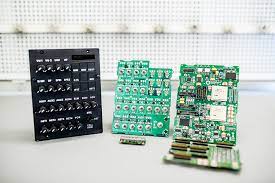Our News
Contact Us
- Tel:0086-135 8771 2673
- Tel:0086-135 8771 3265
- Email:[email protected]
- Address:No.666 East Jiaotong Rd.,Wu'niu Street,Yongjia,Wenzhou,Zhejiang,China
Slim and Modular Relays: Streamlining Control and Maximizing Efficiency
News | Aug 07,2023
In the ever-evolving world of electronics and automation, the quest for efficiency and space optimization is the driving force behind innovation. A notable development embodying these principles is the advent of slim modular relays.
These compact yet powerful devices have revolutionized the way we manage circuits, offering a range of benefits from space-saving designs to enhanced versatility.
This article provides an in-depth look at the importance, inner workings, applications and future trends of low-profile and modular relays, showing how they are key components of modern technology.
The Significance of Slim and Modular Relays
As technology continues to advance, the size and efficiency of components have become paramount considerations. Slim and modular relays, designed with compactness in mind, hold profound significance in the realm of electronics and automation.
Their reduced dimensions make them ideal for applications with limited space, enabling engineers and designers to optimize the layout of control panels, devices, and systems.
Furthermore, the modularity of these relays introduces a new level of flexibility. Traditional relays often come as single units with fixed configurations, limiting adaptability.
In contrast, slim and modular relays can be easily combined and customized to meet specific requirements. This modular approach streamlines design and assembly processes, resulting in efficient systems tailored to unique needs.
Inner Workings and Construction
Slim and modular relays are built upon the same fundamental principles as traditional relays. They comprise several key components that collaborate to achieve controlled switching of electrical circuits.
Contacts: At the core of every relay are contacts, the elements responsible for completing or interrupting the flow of electrical current. Slim and modular relays retain the familiar NO (normally open), NC (normally closed), and CO (changeover) contact configurations.
Coil: The coil is the driving force behind the relay operation. When energized, it generates a magnetic field that causes the contacts to move, either closing or opening the circuit.
Modular Design: What sets slim and modular relays apart is their construction. These relays are engineered with standardized dimensions and connectors, allowing them to be easily stacked or combined into larger configurations. This modularity enhances scalability and adaptability in various applications.
Slim Form Factor: The slim design of these relays is achieved through efficient layout and optimized use of space. This slim form factor is particularly beneficial in applications where space is a premium, such as densely packed control panels or compact devices.
Applications and Versatility
The versatility of slim and modular relays is evident in their diverse range of applications across various industries.
Industrial Automation: In industrial settings, where machinery and processes demand precise control, slim and modular relays excel. They play a pivotal role in controlling motors, solenoids, valves, and other high-power components, ensuring seamless operation and efficiency.
Building Automation: In building management systems, slim and modular relays regulate lighting, HVAC systems, access control, and security devices. Their space-saving design and adaptability make them essential in creating efficient and responsive building environments.
Home Automation: In the realm of home automation, these relays manage lighting, smart appliances, and climate control. Their compact size and modular nature allow for easy integration into smart home systems, enhancing convenience and energy efficiency.
Automotive Systems: Slim and modular relays find application in automotive control units, managing functions such as window operation, lighting, and wiper control. Their compact design complements the space constraints of modern vehicles.
Energy Management: In energy management systems, these relays control power distribution, load shedding, and energy monitoring. Their modular architecture enables fine-tuning of power usage and optimization of energy consumption.
Benefits and Future Trends
The benefits of slim and modular relays extend beyond their compact size and versatile applications.
Space Optimization: The slim design of these relays is instrumental in maximizing space utilization within control panels, devices, and systems. This is particularly valuable in environments where real estate is at a premium.
Flexibility and Scalability: The modular nature of these relays empowers designers to create custom configurations that precisely match the requirements of a given application. This adaptability enhances system flexibility and scalability.
Ease of Maintenance: Modular relays simplify maintenance processes. A malfunctioning module can be swiftly replaced without disrupting the entire system, minimizing downtime and ensuring continuous operation.
Cost Efficiency: By optimizing space and enabling customization, these relays contribute to cost efficiency in terms of design, assembly, and operation.
Integration with IoT: As the Internet of Things (IoT) continues to shape modern technology, slim and modular relays are likely to integrate IoT capabilities. This would enable remote monitoring, control, and data exchange, enhancing system intelligence and accessibility.
Conclusion
In the dynamic world of electronics and automation, slim modular relays are a model of innovation, meeting the ever-increasing demands for efficiency and space optimization. Their compact design, modular architecture, and versatile applications reshape the way we manage circuits, providing flexibility, adaptability, and simplified control.
From industrial automation to home and building management, these relays play a key role in improving accuracy, responsiveness and energy efficiency.
--- END ---


